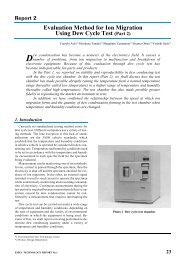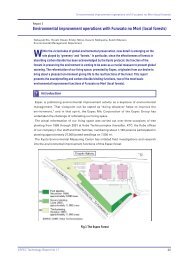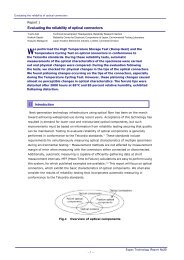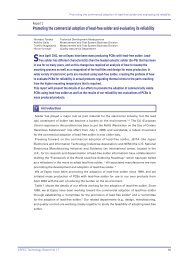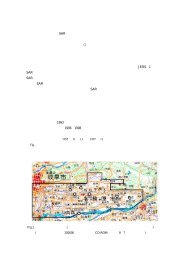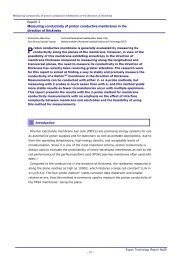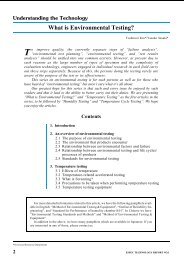download
download
download
You also want an ePaper? Increase the reach of your titles
YUMPU automatically turns print PDFs into web optimized ePapers that Google loves.
Measuring conductivity of proton conductive membranes in the direction of thickness<br />
3-2 Conductivity<br />
Conductivity was calculated using Rbulk from Fig. 4 (a) and formula 1. Fig. 5 shows the<br />
conductivity values measured at an ambient temperature of 80°C and various humidity<br />
levels. For comparison, the results from 4-probe measurements in surface direction were<br />
also plotted. As shown in Fig. 5, conductivity results using 2-probe measurements in the<br />
direction of thickness were similar to those using 4-probe measurements in the surface<br />
direction for all electrode materials, demonstrating the validity of using the 2-probe<br />
method in the direction of thickness.<br />
4<br />
Fig. 5 Comparison of conductivity results at 80°C using the 2-probe<br />
Method in the direction of thickness and the 4-probe method in<br />
the surface direction.<br />
Conclusions<br />
Conductivity of Nafion ® membranes in the direction of thickness was measured using the<br />
2-probe AC impedance method. These experiments confirm that equivalent circuit fitting<br />
can separate membrane resistance from the interface components. Moreover, good<br />
contact at the interface between the membrane and electrode can be attained by coating<br />
the electrode with Nafion ® solution, and conductivity results are similar to results using<br />
4-probe measurements in the surface direction. These experiments demonstrate the<br />
validity and feasibility of using the 2-probe method for measuring in the direction of<br />
thickness.<br />
- 19 -<br />
Espec Technology Report No20



